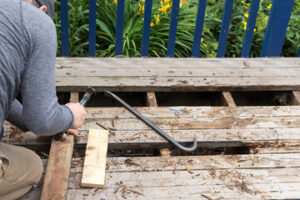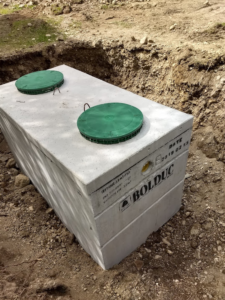When selecting Roofing Company Near Me look for one that offers a solid warranty. Make sure they are state licensed and have insurance that covers their workers.

Ask for references and review local online reviews to see if previous clients were satisfied. Check that the contract clearly states all project details, including permit acquisition and payment procedures.
A reputable roofing company will have the proper licensing and insurance policies to work on your roof. This includes worker’s compensation and general liability. You should ask to see the contractor’s insurance and license documents before hiring them for your project.
The license is proof that the roofing company meets all state and local laws regarding their operations and practices. It also means that they have passed background checks and are held to a high standard of professional conduct. This can help you feel confident that the roofing contractor will do a good job.
If you choose a roofing contractor who isn’t licensed and insured, you could end up paying for shoddy work or even damage to your home. If a worker is injured on the job and the roofing contractor does not have workers’ compensation, you may be responsible for medical expenses or lost wages. You could also end up having to pay for repairs if the roofing contractor causes damage during the project.
In addition, insurance is important for other reasons. If the roofing contractor breaks a large window or spills tar on your car, they should have enough money in their insurance policy to cover the costs. You should also check if the roofing contractor is bonded, which means they are obligated to comply with laws and regulations related to their business.
If you find a roofing company that isn’t licensed or insured, it’s best to avoid them. It’s illegal to do roofing work without a license, and it can leave you vulnerable to legal action from the city or homeowner’s insurance companies. Choosing a roofing company that is licensed and insured will give you peace of mind knowing they will do a good job and won’t cause any damage to your home or car. Also, they should be able to provide you with warranties on their workmanship and materials. Ask about these when getting an estimate for your roofing project. You should also ask about the contractor’s history of working with your specific roof type and repair needs.
Dedicated Service Team
The dedicated service team is a group of highly trained professionals who are assigned to work exclusively on your project. They will have a clear understanding of your business and requirements, so they can provide better support and help you achieve your goals. In addition, a dedicated team can offer you consistent quality of service over time.
When choosing a dedicated team, it is important to get recommendations from friends and colleagues. Once you have identified a few potential teams, interview them to see if they are a good fit for your needs. Once you have chosen a team, make sure to get everything in writing.
Dedicated teams can be managed by an internal PM or a third-party agency, depending on the client’s preference. In any case, the client has more management power over the team compared to other models and can monitor progress and day-to-day tasks at all times. This makes the model more flexible and ensures that the team focuses on the client’s strategy. It also helps to reduce operational costs and allows the client to focus on their core business.
Reputation & Reviews
The reputation and reviews of a roofing company are an important factor to consider. A good reputation will attract and retain customers, while a bad reputation can damage the brand’s image. It is therefore important to ensure that your roofing business has a reputation management team in place. This team will work to control how prospects see your business online, and they can also help you to rebuild a positive reputation after a negative feedback.
You should also look at the quality of a roofing contractor’s work over a long period of time. A contractor with a strong track record of satisfied customers and who is in business for the long term will be more likely to provide high-quality service. You can check a roofing company’s reputation by checking their online reviews and ratings.
Online reviews can have a big impact on your roofing business, especially when it comes to local customers. Research has shown that 88% of consumers trust online reviews as much as personal recommendations. With this in mind, it is important to encourage your customers to review your roofing services so that you can build trust with your prospective customers. Online reviews can also help you improve your customer experience by identifying areas where your roofing business can improve.
Experience
When choosing a roofing contractor, you want to know that the company has experience with the type of project you are hiring them for. Ask about their familiarity with the specific roofing system you are considering and request details on past projects they have completed in facilities like yours. This will give you a sense of the contractor’s competence and professionalism.
Also, find out if they have any special skills that will benefit your project, such as knowledge of local building codes and regulations. This can prevent unexpected issues and legal complications down the road.
Finally, make sure that they have a solid track record and have been in business for several years. This can help you to feel confident that they will be around to honor their warranties and provide ongoing support.
Choosing the right contractor can save you time, money and stress during your roofing project. Take the time to interview multiple contractors and visit past projects if possible. This will allow you to get a comprehensive breakdown of the scope of work, cost estimates and timelines. Be sure to inquire about manufacturer and workmanship warranties as well.
Choosing the right roofing company will ensure that your roof is in good hands for years to come. Look for a company that prioritizes quality craftsmanship and excellent customer service, as they will be more likely to go the extra mile to meet their clients’ needs. They will also be more likely to offer a warranty on their work, giving you peace of mind that should any issues arise in the future, they will be there to provide prompt and friendly service.








